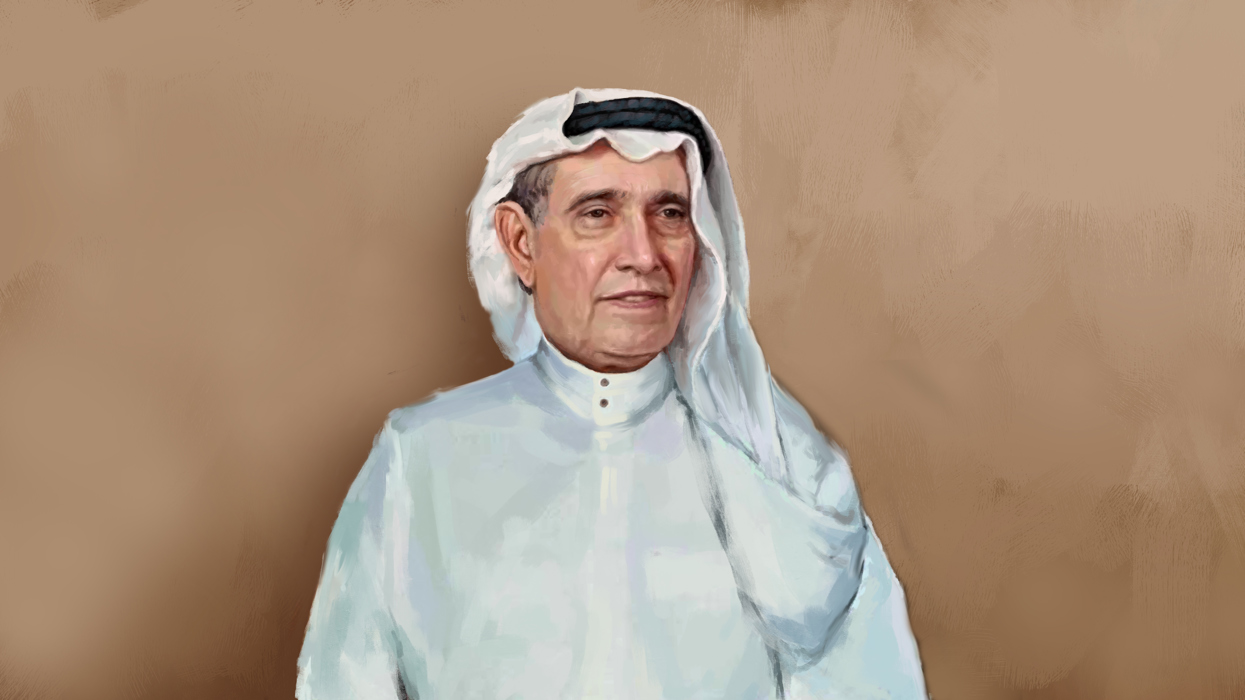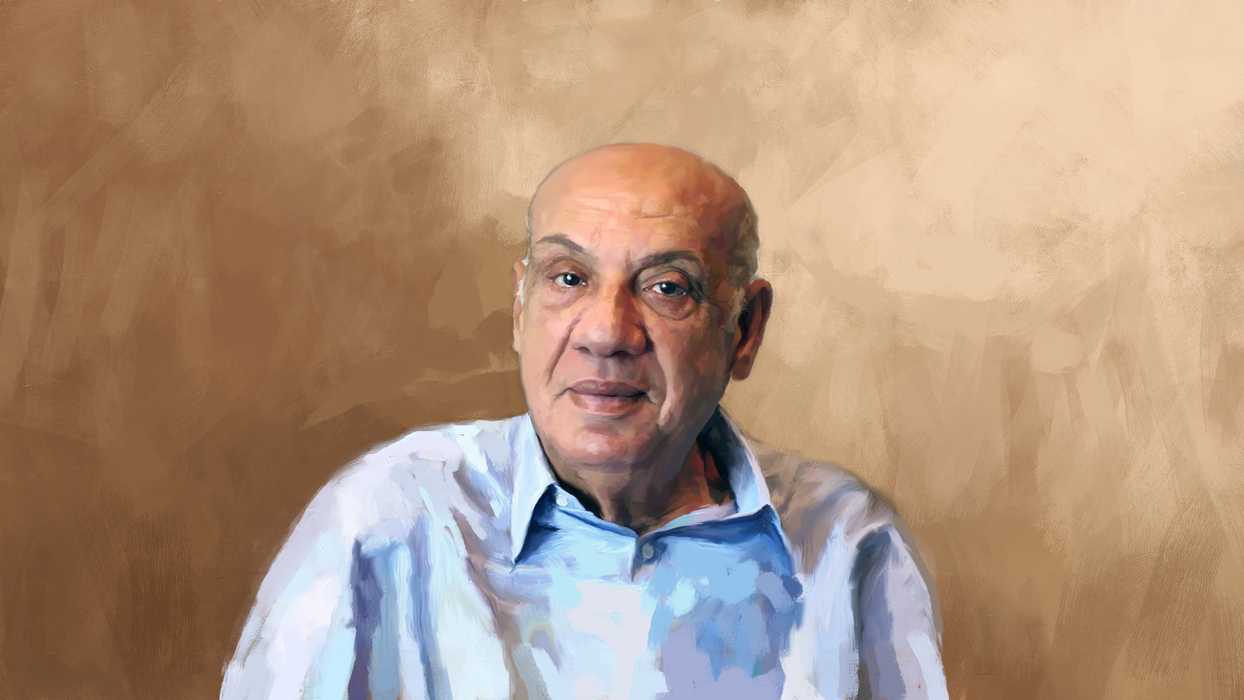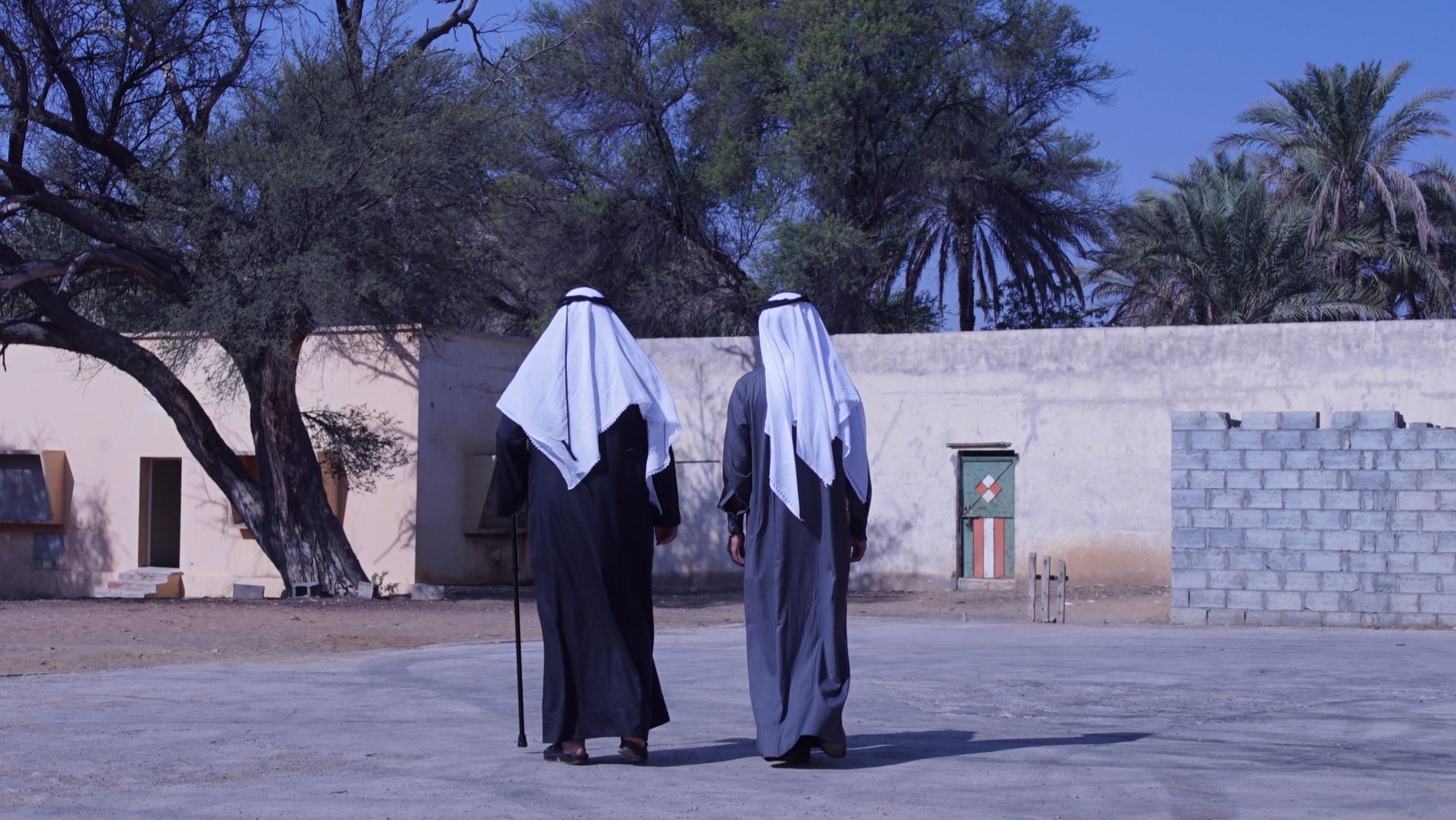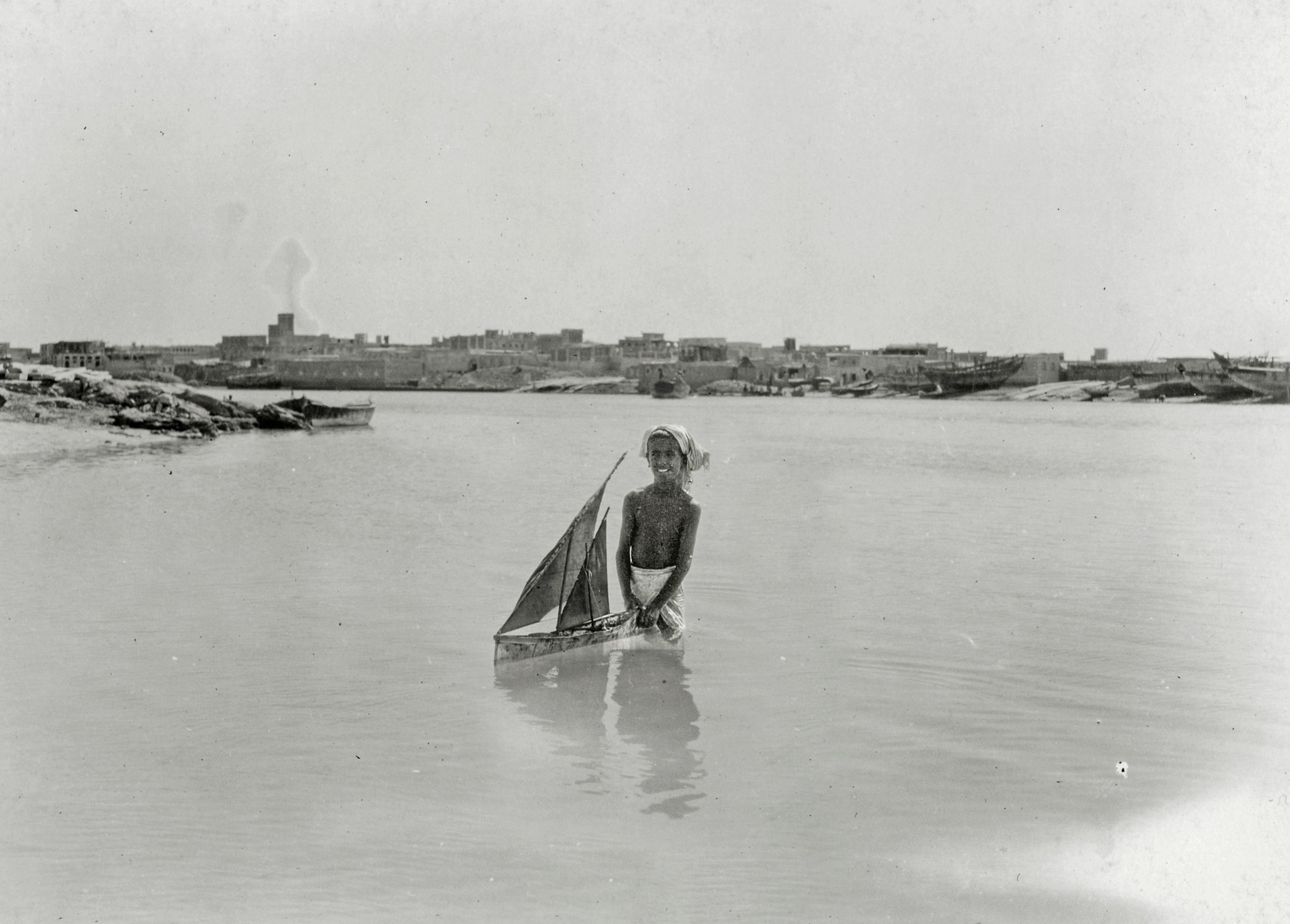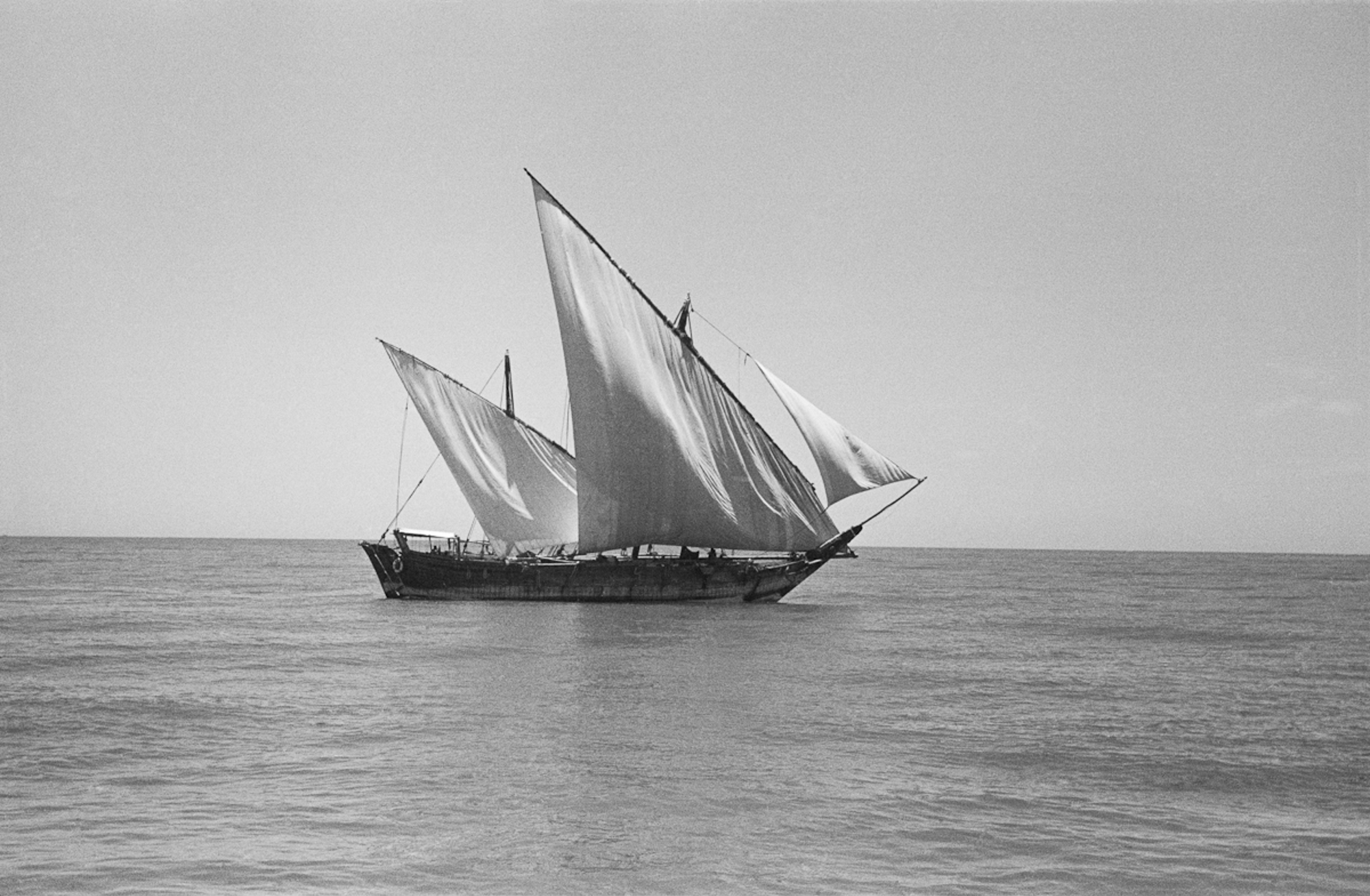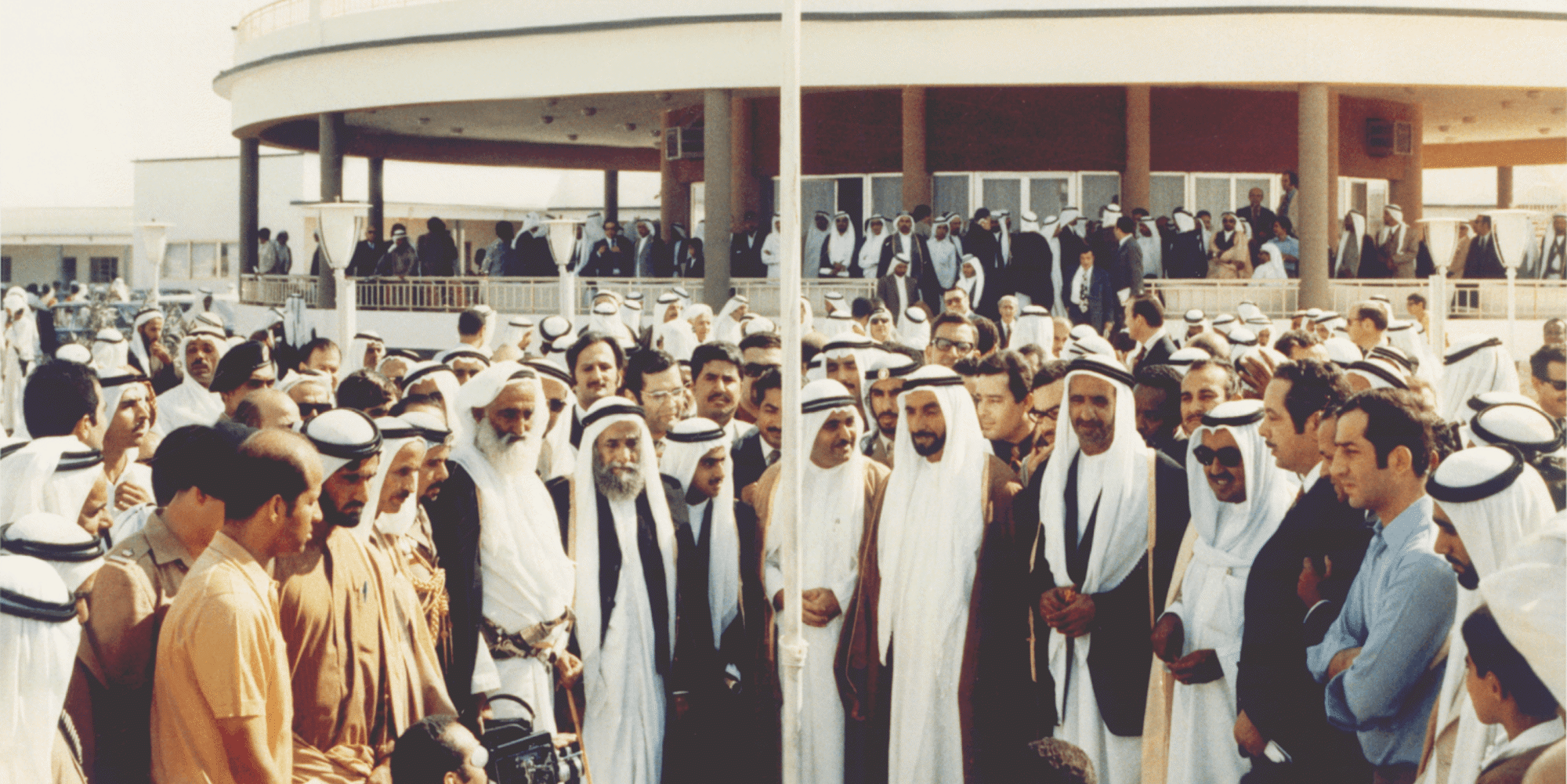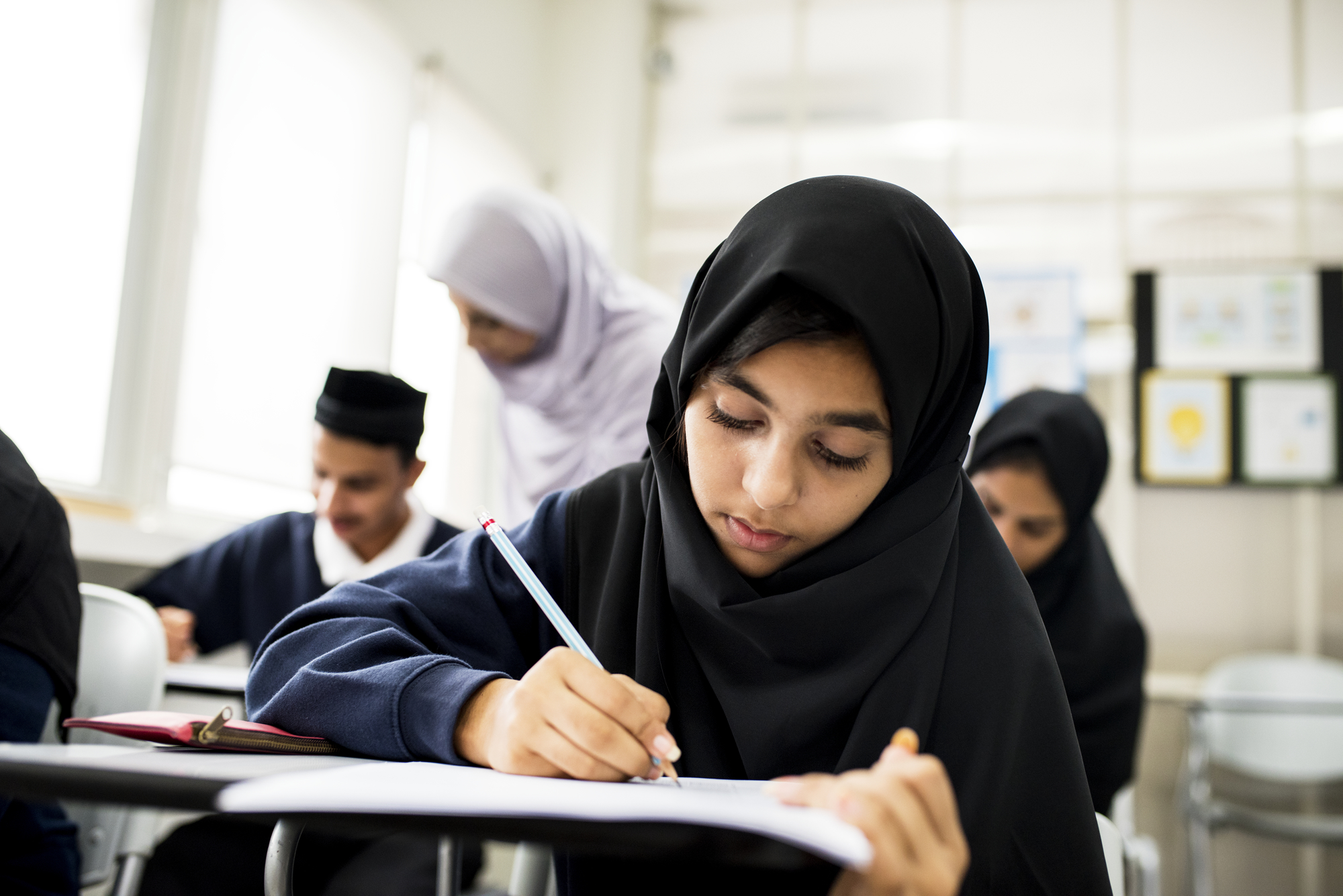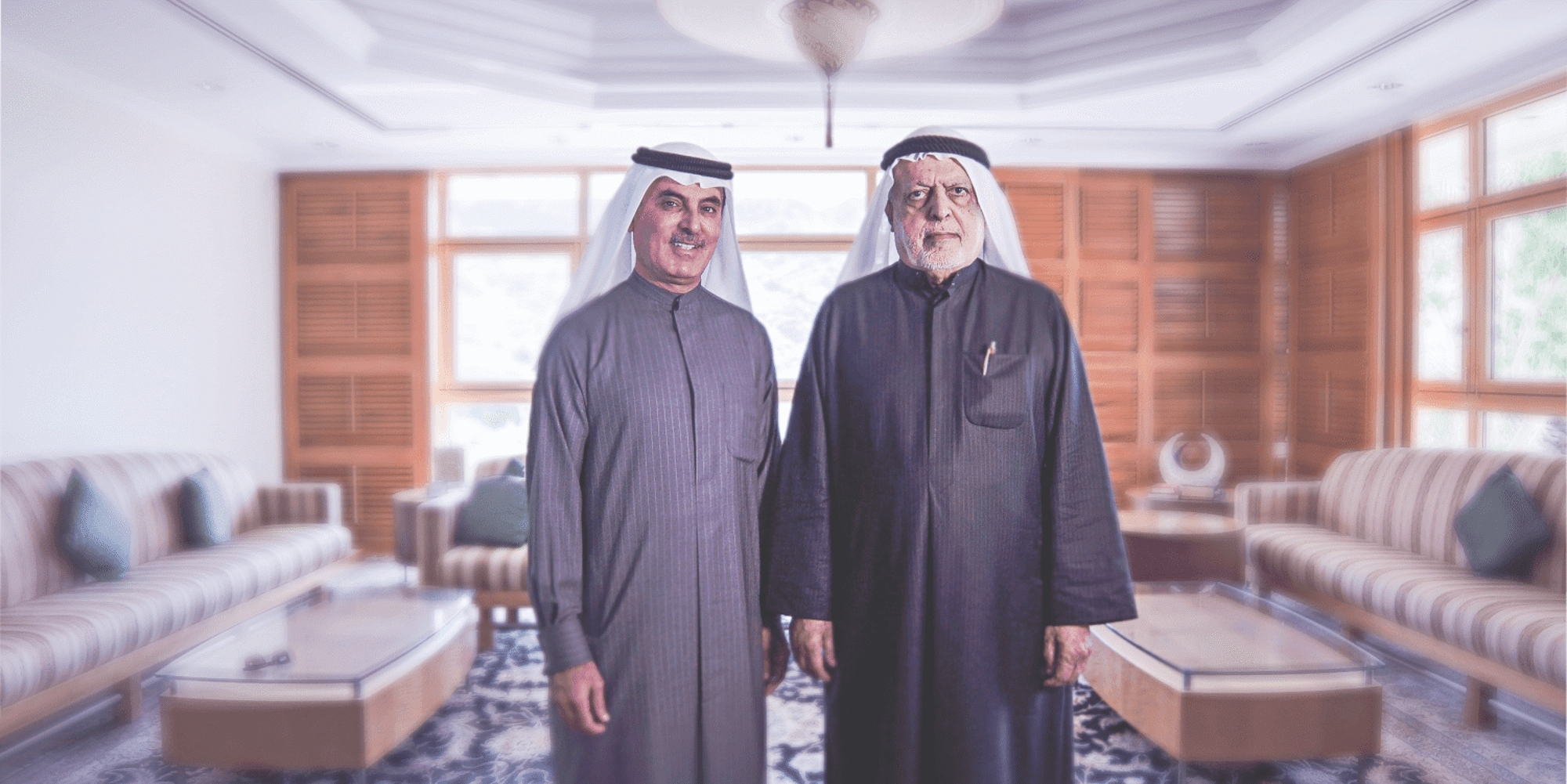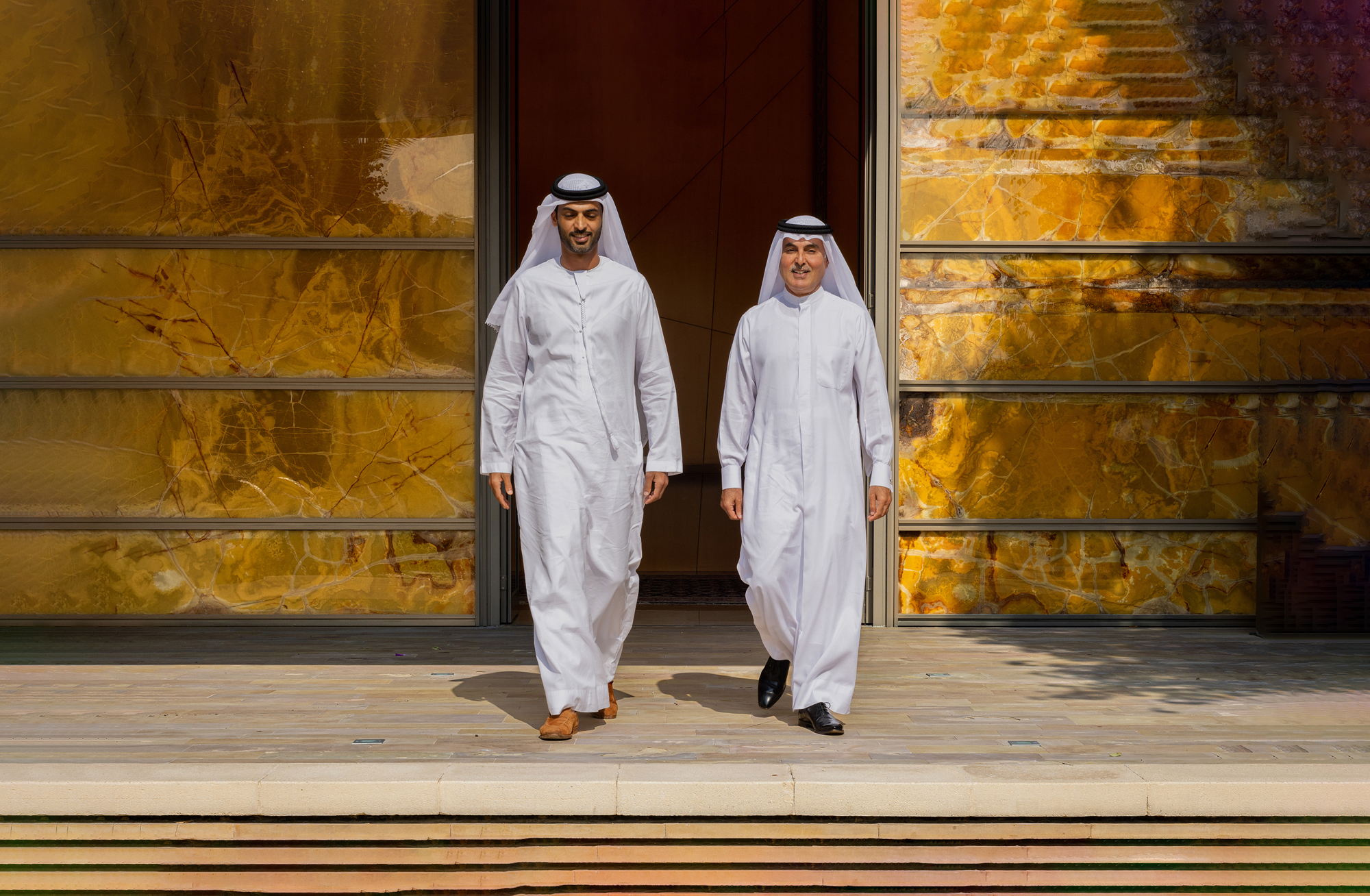
1960
1970
Pathways to prosperity
Diversification leads to expansion and success
As Dubai began to prosper, so too did its families. The Al Ghurair family was no exception, and careful investment, combined with some calculated risks, was handsomely rewarded, prompting Abdulla Al Ghurair to give back to the communities around him. This was the beginning of what was to become a grand philanthropic journey, the legacy of which will be felt across the region by generations to come.
"My father had always been keen to carry out charity and offer assistance himself in person, where he would visit people, family by family and person by person."
Abdul Aziz Al Ghurair
With neighbouring Abu Dhabi having discovered significant oil reserves some years earlier, Dubai’s rulers doubled down on their exploration efforts and in 1966, they finally found what they had been looking for. Located 60 miles offshore, Dubai’s first oil field was named Fateh (meaning conqueror) and the first shipment of Dubai oil hit the global markets in 1969.
Not for the first time, Dubai had found treasure beneath its waters. But unlike the obliterated pearling trade, oil would ensure long term prosperity above the ground too. It was an exciting time to be an entrepreneur in the region and buoyed by oil wealth, Dubai’s economy began to scale and diversify.
With earnings from their ambitious and successful trading voyages to India and beyond, and a new interest in the UAE following the discovery of oil, the Al Ghurairs decided to expand their business empire into construction, property, and food production. They established a holding company to manage their various interests, and an ageing Ahmad Al Ghurair delegated the running of different parts of the business to his five sons, Saif, Abdulla, Majid, Marwan, and Gomaa.
Abdulla, having already impressed his father with his keen eye for business opportunities, was put in charge of the group's real estate, and in 1967, Abdulla, together with his brothers, founded the Bank of Oman, now Mashreq Bank, which continues to be one of the UAE's leading financial institutions.
Dubai
in
the 1960s
In 1961, the first cargo of crude oil produced by Japan’s Arabian Oil Company operating in Khafji - a neutral zone between Saudi Arabia and Kuwait - arrived in the Asian country, sparking deep curiosity about the Gulf region. A year later, Yoshio Kawashima, a young Japanese photographer working for the Sankei Shimbun newspaper, arrived in what was then the Trucial States to explore. During a five-day stop-over, Kawashima, working with journalist Hiroshi Kato, captured more than 100 images of the bustling yet still largely under-developed Dubai.
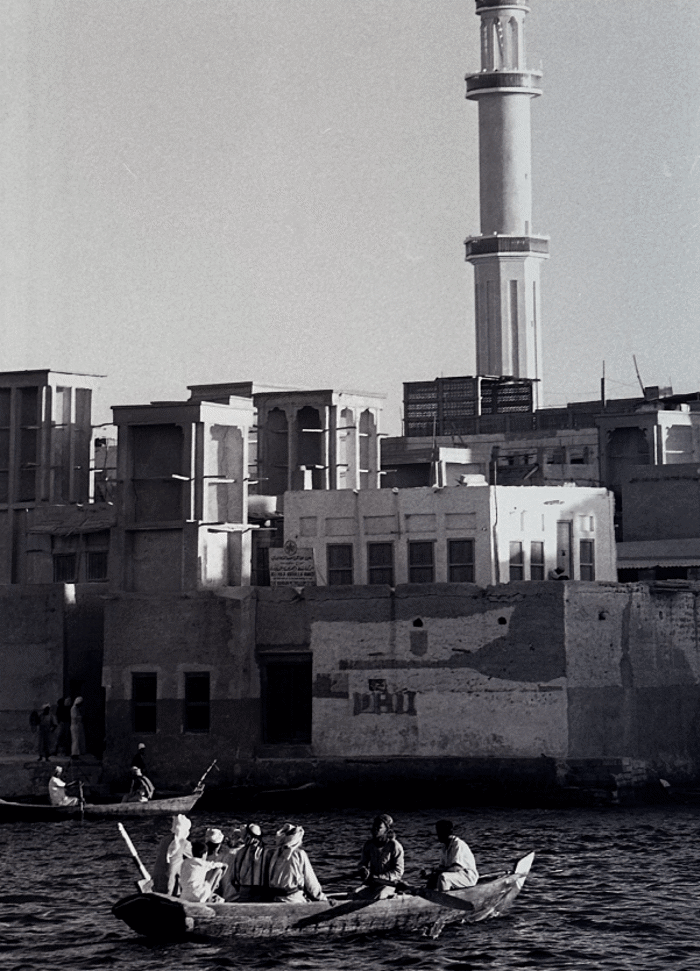
An abra crosses the creek close to Bur Dubai pier in front of the Ali bin Abitaleb mosque, still standing today. © Y. Kawashima, Sankei Shimbun. This image is from from “Dubai 1962” a book with text by Kimi Makishima-Akai.
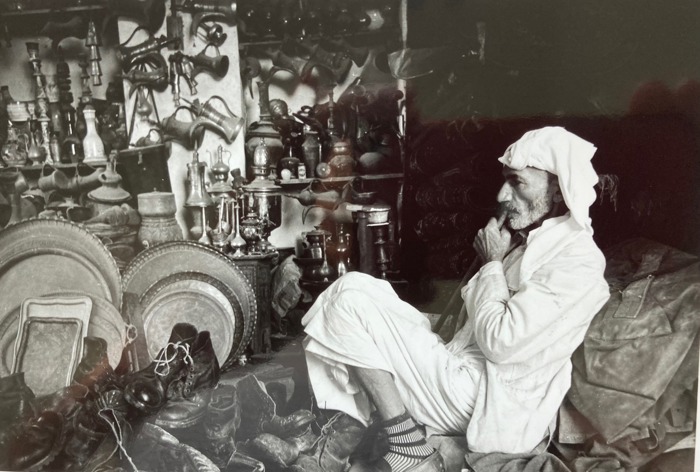
A trader smokes a pipe at his hardware and leather stall in Dubai Souq. © Y. Kawashima, Sankei Shimbun. This image is from from “Dubai 1962” a book with text by Kimi Makishima-Akai.
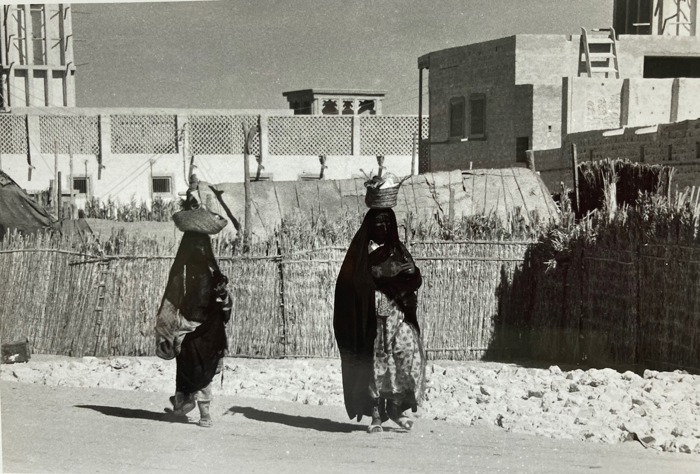
Women carrying goods to market in baskets made of palm leaves. © Y. Kawashima, Sankei Shimbun. This image is from from “Dubai 1962” a book with text by Kimi Makishima-Akai.
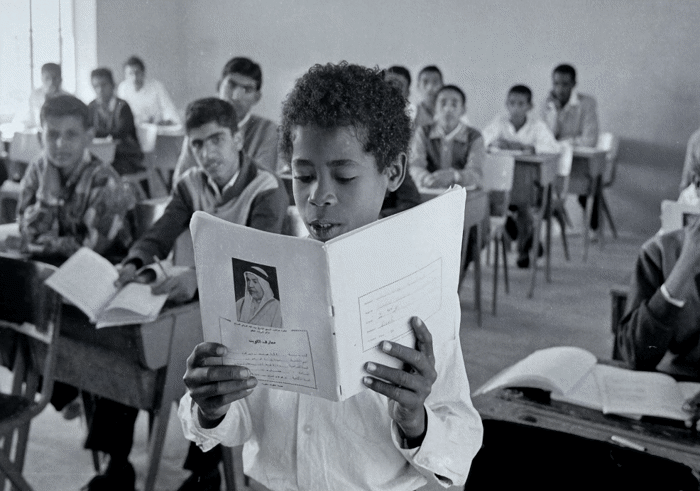
Boys in class at Al Shaab School in Shindaga. In the 1960s, all educational material in Dubai’s schools was provided by neighbouring Kuwait, already wealthy from oil. This textbook shows a picture of Kuwait’s then-ruler, Sheikh Abdullah Salim Al-Sabah. © Y. Kawashima, Sankei Shimbun. This image is from from “Dubai 1962” a book with text by Kimi Makishima-Akai.

A open-backed truck carries young children to school along roads of sand. In the 1960s only a few thoroughfares were paved and four-wheel drives were required to cover any distance. © Y. Kawashima, Sankei Shimbun. This image is from from “Dubai 1962” a book with text by Kimi Makishima-Akai.
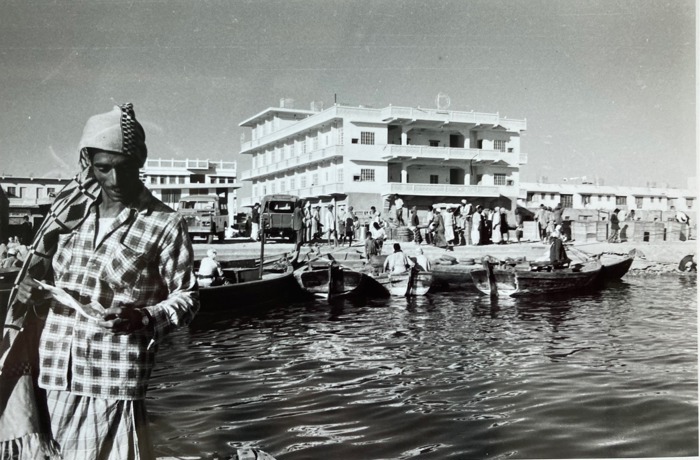
By the 1960s, Dubai Creek was starting to modernise with new buildings springing up along the water's edge. © Y. Kawashima, Sankei Shimbun. This image is from from “Dubai 1962” a book with text by Kimi Makishima-Akai.
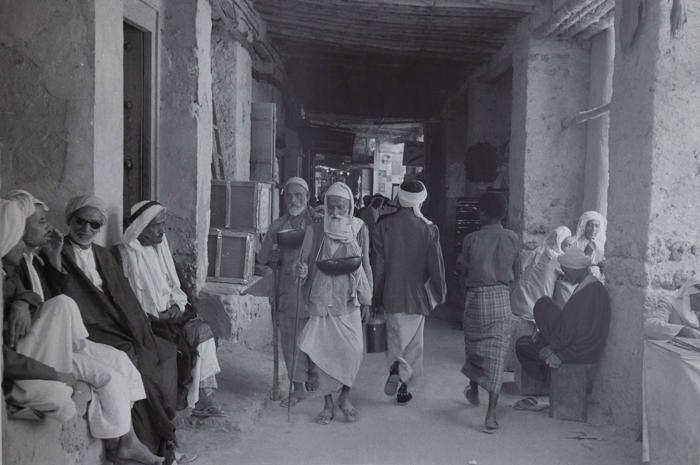
Dubai’s souq was the beating-heart of the city, where merchants plied their trade and beggars, pictured here with bowls around their neck, sought alms from the wealthy. © Y. Kawashima, Sankei Shimbun. This image is from from “Dubai 1962” a book with text by Kimi Makishima-Akai.
Not only would Abdulla and his brothers come to be behind some of Dubai's most notable new developments, but the family's bank would also be the financial enabler of many others. Yet, despite the excitement felt by this unprecedented period of growth, Abdulla never forgot where he had come from. Inspired by his experiences of growing up surrounded by hardship, and guided by his strong faith, the businessman began to quietly distribute food, cash, and other supplies to communities in need.
Abdulla was well-liked by the expatriate traders who had begun to settle in Dubai at this time. He showed particular support to Dubai’s burgeoning Indian community, often presenting their needs to Dubai’s then-ruler, Sheikh Rashid, notably helping to secure land for a school and club house, both of which remain today.
One Indian businessman, who came to Dubai in the 1950s from what was then Bombay to trade textiles, met Abdulla on a number of occasions and remembering his generosity, said he was always available to lend an ear and support people in the Deira community.
Abdulla soon realised, however, that these donations offered just short-term relief, and in 1964, he stepped forward to pay for a school to be built in Masafi, a small village to the east of Dubai, where the family owned a summer house. It was a small gesture at the time, but in the years since this school has come to be emblematic of the Al Ghurair family's deep-rooted commitment to education and community development.
"I remember during the month of Ramadan sitting with my father in the majlis for Iftar. Many people would come to visit him. His charity was bountiful and discreet."
Abdul Aziz Al Ghurair
The village of Masafi is located near the Hajar Mountains in the east of the UAE, along the border between the emirates of Fujairah and Ras Al Khaimah. It sits atop a network of natural springs and its higher altitude means it enjoys cooler temperatures during the UAE’s hot summers. Before the modernisation of the UAE’s road networks, Masafi was located along one of the few through-routes from the interior to the UAE's east coast. This, and its pleasant climate, made Masafi a popular place to visit.
The Al Ghurair family built a holiday home there and were regular visitors to the small village, which even today has a population of just a few thousand people. It was while spending time in Masafi that Abdulla noticed the lack of amenities for its permanent residents, prompting him to build a school for both boys and girls. This school would become the first of many gifts from Abdulla to the people of Masafi, who continue today to hold the businessman in extremely high regard.
